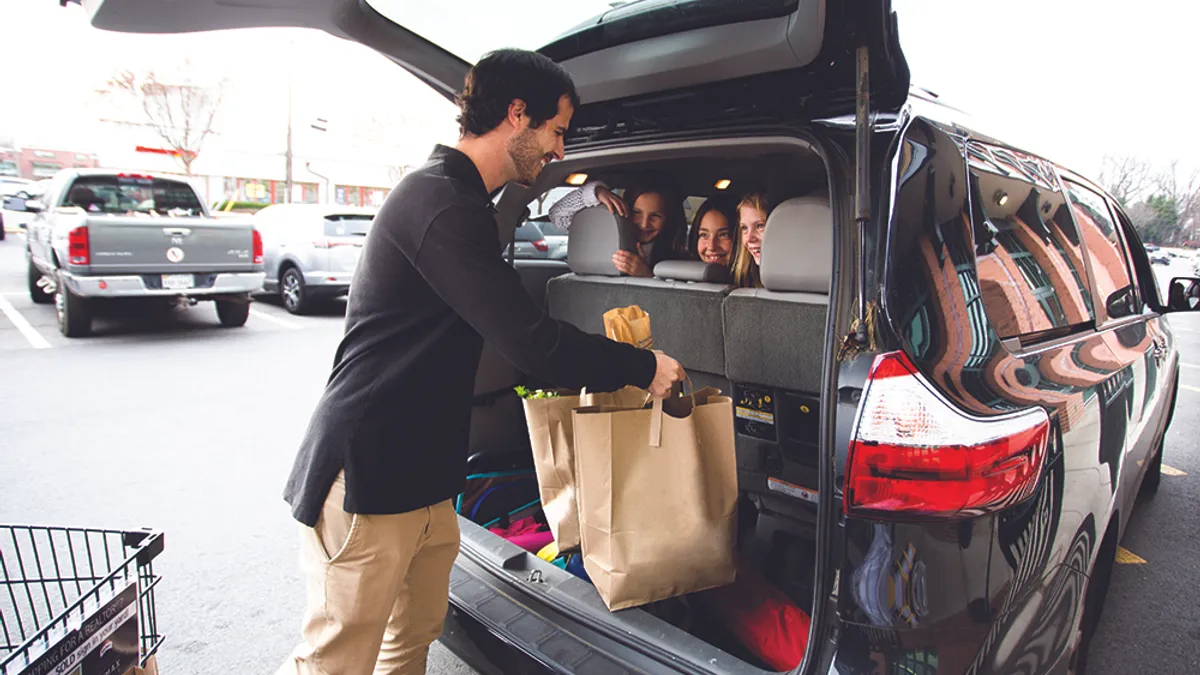Dive Brief:
- Online sales of packaged food and beverages could hit as much as $109 billion this year, according to research from the Food Industry Association (FMI) and NielsenIQ.
- Grocery is now the top online CPG category, the firms revealed, accounting for 44% of all CPG e-commerce sales over the year-long period ended Nov. 30. Grocery CPG sales rose 125% in 2020, with click-and-collect providing a notable sales boost.
- FMI and Nielsen noted companies have a $58 billion opportunity in getting online shoppers to spend as much on food as they do on nonfood items.
Dive Insight:
During a presentation at the FMI Midwinter conference, held virtually this year, presenters Doug Baker, vice president of industry relations with FMI, and Elizabeth Buchanan, head of consumer intelligence for North America with NielsenIQ, said that more than 20 million consumers began buying CPG grocery products online in 2020. Many will continue buying online this year, and depending on numerous factors, including the vaccine rollout and the economic recovery, online packaged food and beverage sales could range from $94 billion to $109 billion.
The two noted that food retailers and CPGs have benefited from out-of-home eating and drinking occasions turning to in-home occasions. Beverages, wine and coffee categories topped e-commerce dollar growth. Overall, shoppers spent $66 billion on online food and beverages and $40 billion on restaurant delivery.
FMI and Nielsen did not include retail foodservice and meal kits into their sales figures and projections, as they have in the past.
Instacart, which counted nearly half a million contract shoppers among its ranks during the pandemic’s peak, served as a point of entry for many online grocery shoppers. According to FMI and Nielsen, the company raked in $15.7 billion in online food and beverage dollars in the 12-month period ended Nov. 30 — second only to Amazon, which totaled $17.4 billion over the same period. Walmart pulled in $6.5 billion in online grocery dollars while Kroger totaled $6.1 billion.
Click-and-collect, which grocers raced to expand last year, with some waiving fees to spur interest, was another entry point for shoppers, with orders up 130% while the number of shoppers using the service increased 113%.
The results from FMI/Nielsen align with other industry reports that have shown eye-popping e-commerce growth in 2020 and the likelihood of elevated channel sales long-term. With the focus on packaged food and beverage sales specifically, these latest results highlight a fast-changing sector in e-commerce, with ship-to-home marketplaces, direct-to-consumer strategies from manufacturers and automated grocery store models all centered on boxed, bottled and canned goods.
For grocers, the rapid growth also underscores the need to make online fulfillment more profitable. To that end, companies are making workforce adjustments, renegotiating with third-party providers and investing in new hardware, software and dedicated facilities.













